
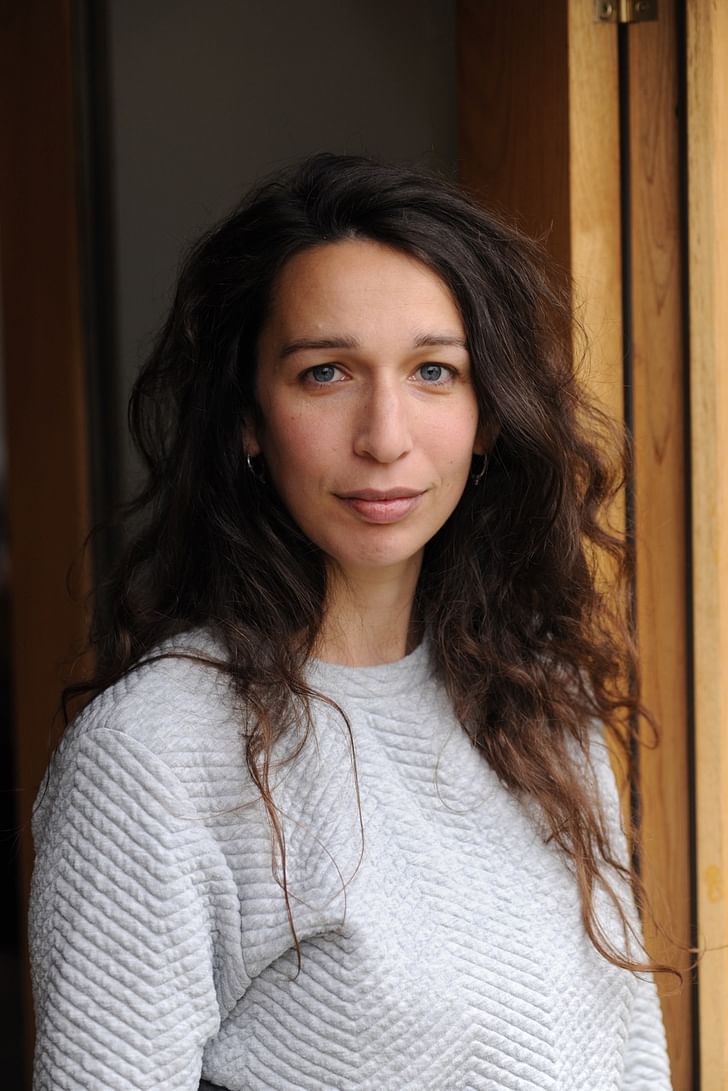
Three awards sit centre stage on the desk of Citizens Design Bureau’s tiny office and workshop in Hackney Downs, in East London. First a Sterling Award 2014 for The Everyman Theatre in Liverpool, from CDB founder Katy Marks’ time at Haworth Tompkins Architects, and then two fresh World Interiors Awards: Best Leisure and Entertainment Venue, again with Haworth Tompkins, and Best Bar for the Royal Court, with Lyndon Goode Architects. This is no ostentatious display: these are hard-won trophies for an architect with a visionary, warrior-like approach to contemporary practice.
“It can be really difficult when you’re so close to your work, you can’t see the wood for the trees. I think getting awards is mostly really nice for morale; it helps to sell the idea of you to clients. ‘An award winning practice,’ or whatever. Actually more than anything else, these little guys,” Marks said, patting the awards, “came at just the right time, just before Christmas, just as we were having a real nightmare. We really needed a morale boost so that was really lovely. I’ve set up by myself, I’m doing it with a team but it’s really exhausting, I don’t have anybody here as a partner at the moment, it’s really nice to get external recognition and a pat on the back.”

Marks established Citizens Design Bureau a month before she was due to give birth in September 2012, after a ten-year stint working, in her own words, as an “apprentice” at Haworth Tompkins. The first person she hired was a friend who’d she met there, Magda Pelszyk. “Magda is a mother as well and was someone that worked with me on the Everyman I felt strongly that mums are valuable, we needed to be agile and mums are some of the most agile people.Theatre. I felt strongly that mums are valuable, we needed to be agile and mums are some of the most agile people.” Marks went on to employ four other women, making up a studio that now has five female staff to one male.
Currently nominated for Emerging Female Architect of the Year, by The Architects Journal, Marks laughs. “Yes, before all this I was ‘submerged'.” Marks then adds a serious note, taking pains to explain that her frustration at the work culture of architecture is in no way in reference to her treatment at Haworth Tompkins, a place that she holds obvious affection for, but is instead targeted at the wider world. Her frustration at the wider world surfaces at regular intervals through our interview on a range of topics – from education to intellectual property, lack of self awareness and self-worth of architects and, at this moment, about women’s role in architecture after childbirth.

“When you have kids you’ll never get work that is measurable to work that you were doing before,” said Marks bluntly. “Most women coming back after having children will find that the nature of their role has changed, maybe not explicitly, it could be well-meaning, but no one wants to admit that the woman’s role has changed. The problem is it happens in a way in experienced women are perfectly placed to play much more strategic leadership roles.which the company doesn’t have to do anything, it’s the path of least resistance. ‘She can’t do as much now, do a bit less then someone else will do what she can’t do,’ and that becomes entrenched.”
What’s the remedy? How does Marks see it? “Use their skills more effectively,” says Marks, “rather than say ‘she’s only working part time, therefore she can’t be the lead person,’ it actually puts you in a much better position to be more strategic, running a team who are doing things on the ground, dipping in and out on a strategic guiding way – experienced women are perfectly placed to play much more strategic leadership roles. I know so many women who are in their mid to late-30s having kids a bit later who are massively frustrated, because they know that they can play that kind of role but nobody else in the office sees that”.
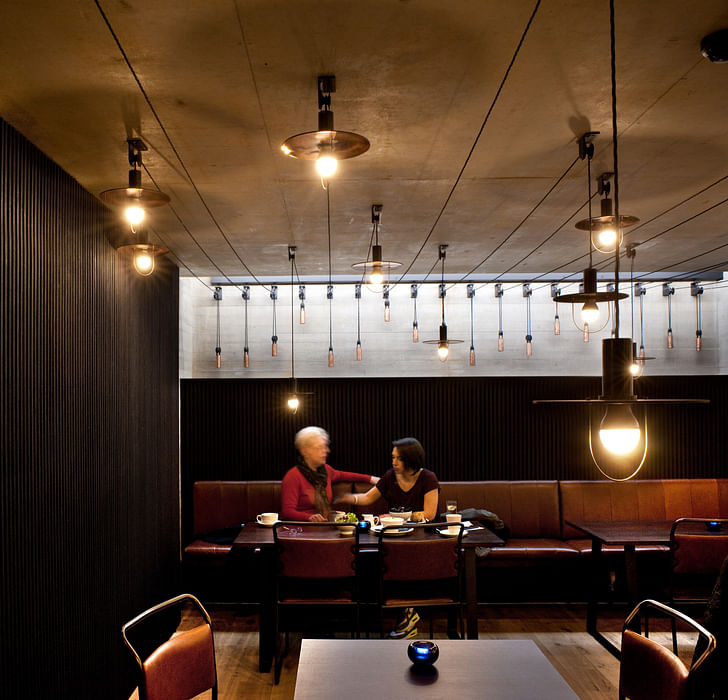
Impact Hub
The mechanics of the working environment have been a constant design interest to Marks throughout her career. On completing her degree in 2003, Marks co-founded arguably one of the first, now ubiquitous, co-working spaces for creatives, Impact Hub, in Islington in North London. “It’s interesting as it’s now the most common thing in the world…the idea of co-working space didn’t exist when we set up,” said Marks. “Of course, people had been 'sharing a space’ in the past but the idea of hosted shared working in which you pay – we developed a system using mobile-phone type tariffs based on time and space. As soon as we set up the Hub, it was successful, it hit a bit of a zeitgeist, people suddenly thinking ‘that’s how we want to work’. There was a tipping point, in London in particular, of the rise of the freelancer, everyone working wirelessly, we rode that wave for a bit and suddenly we had calls from all over the world saying, we want one of those.”how people want to work together would grow out of the specific chemistry of the place.
Impact Hub is now a global network with incarnations on every continent, but as ever Marks was restless. “I didn’t want to go round the world making clones of what I though an office should be. I felt strongly that I didn’t want it to be a franchise idea, but that this kind of idea of how people want to work together would grow out of the specific chemistry of the place.”
Has Impact Hub fallen into the trap of being a branding exercise? “No,” said Marks, “I think that still sets the Impact Hub network apart from some of the other co-working places that set up, it’s the only one that has that not-for-profit community focus, it’s very focused on networks. It’s a network of really interesting people.” Marks points out that Architecture 0-0 were amongst the first tenants, and took on the mantle of developing hub co-working spaces further.

Hackney Downs Studios
Citizen Design Bureau’s current location in Hackney Downs Studios is a development built on Marks’ values of community, a networked hub of creativity. “What was interesting about this place was that ten years ago, we were talking about new and interesting ways of working and it was about the workspace, fast forward ten years and it’s all co-working and ‘freelance blah-blah-blah’. I’ve become much more interested in how you create a community from that – how do you allow people to grow within that space?” Marks was given the opportunity to develop the former print works, a space of 4,000 square feet, into a performance and social space with small business premises for the creative and maker industries that are magnetically drawn to this area of London.
“One of the frustrations for me at Impact Hub was that once people got established there were maybe two or three people teams, but once they got to that size it was no longer an appropriate place to work,” explained Marks. “What was really interesting about this place was that I saw an opportunity to develop it, not just as another workspace but as one that started to look at how you spread work into social. We started to create a much greater mix. In this building there is some workspace which is shared and others that are very small offices to fit three or four people, there are other really large spaces for larger companies which means that when you are growing or shrinking you can stay in the same building. You can work in a slightly different way and then on top of that you build in social space like a café, that still provides that social glue for what’s going on. We’ve now got shops, we’re in the process of developing a children’s nursery, we’ve got a makers alley and we’ve brought in a theatre. It’s much more diverse.”

Haworth Tompkins
Talking about theatres brings us back round to the work that Marks is generally most known for, having worked on many high profile theatres including The National Theatre Studio, Young Vic Foyer Bar, Sondheim Theatre and Everyman Theatre with Haworth Tompkins. Returning to her time at Haworth Tompkins after working on Impact Hub, Marks said, “I felt that I really wanted to be an apprentice, I felt very strongly that when we were setting up the hub it was really exciting, the comradery of the whole gang doing it together, but I also felt we were doing things the long slow hard way because we were picking it up as we went along. I needed to learn how to work on big projects.”
we’re as proud of young practices whose principals worked here as we are of our completed buildings; they've all emerged from a collective way of working.Steve Tompkins, director of Haworth Tompkins, remembers her time at the practice. “Katy was a great presence in the studio, full of positive energy and creative thinking. We asked her to join the team because we enjoyed her approach to architecture as part of life and society, not a closed aesthetic system.” Was Marks’ assessment of the need for a young architect to gain a grounding in a large practice a worthy exercise? “I’d say so, just as it’s important for an established studio to have young architects passing through and bringing new energy,” said Tompkins. “If a young architect can find an environment that will allow them to grow and take creative risks without being exposed too early to the full burden of practice then it’s a brilliant way to develop the capacity to start up a studio. In some respects, we’re as proud of young practices whose principals worked here as we are of our completed buildings; they've all emerged from a collective way of working.”
“Collaboration” is the current buzzword, and one that is oft used in describing the work of Citizens Design Bureau. “I work in a very iterative way,” said Marks, “so whilst working with clients we go through the entire cycle of collaborating. It’s a buzz word now to talk about co-design, collaborative design, and it can be very tokenistic, but I genuinely see it as less about design by committee and more about moving forward with an iterative process where you get something better at the end… I’m interested in the human side of every building, what you touch and feel, and I’d say you definitely say you feel that when you go into one of our buildings. When we did the Royal Court Theatre, we did the beer mats for the bar as well,” referring to the project by Lyndon Goode Architects with Citizens Design Bureau.
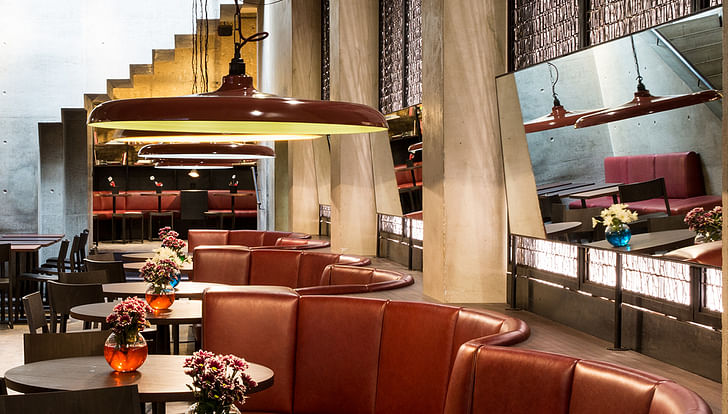
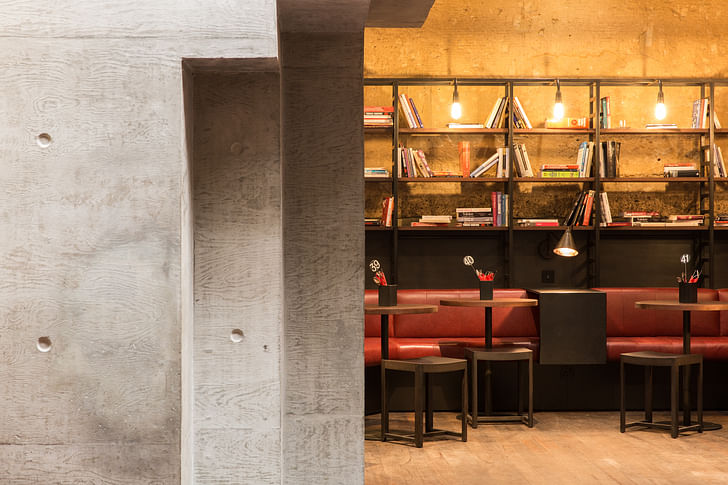
Is collaborative architecture a form of physical branding? “I recoil slightly from the word ‘branding’,” laughs Marks. “I think for example, with the Everyman Theatre, it was an existing building that people had a great affection for – I know, I’m from Liverpool. I had a committee of my mum and all her friends every time I went up there asking me what was going on, and we bulldozed the thing and built a new building. I was very keen that I didn’t want it to be some kind of shabby-chic, retro thing, and at the same time didn’t want it to feel institutional, commercial or municipal and we all worked so hard to find a way in which we could create something resolutely new but still had soul.”
I want a halfway house between open-source and patented, blueprints and creditedHow did Haworth Tompkins accomplish that? “We came from a very intimate understanding of why and who the building was for, but we took environmental decisions – 90% of the building was recycled, all the bricks are reclaimed – so to a certain extent it gave us some kind of palette. We designed all the furniture as well, I designed tables that could be broken up by lighting, we considered what had gone before and adapted.” What’s the difference between architecture and interior design here? “To be honest, I don’t see a difference in that it’s just the same skills applied in a different place. I think it’s quite annoying that in a way there is a distinction,” Marks said firmly.
Marks is currently beginning to look at all the product development opportunities along the way for Citizens Design Bureau. “I’m going to my back catalogue and seeing if I can develop products based on the things that are often developed but then never pursued after projects end,” said Marks. “There has been a lot of discussions around the democratisation of design with open-source design but I want a halfway house between open-source and patented, blueprints and credited, something from that transaction.”
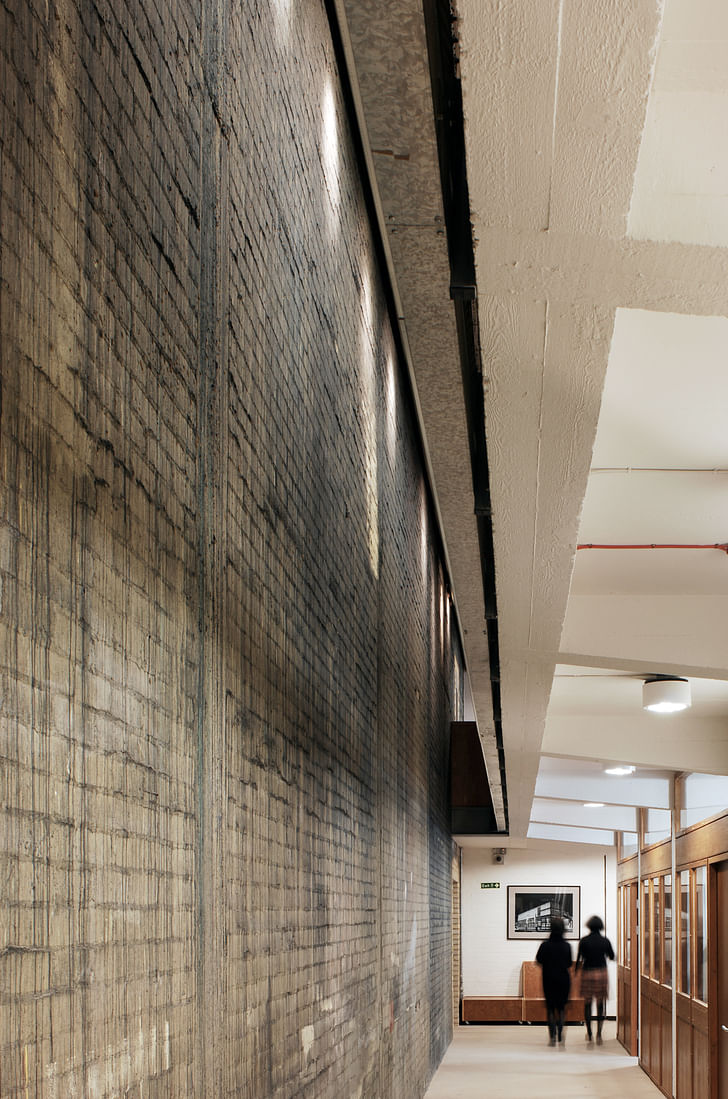
TV: 100K House: Tricks of the Trade
From designing the stage to taking centre stage, Marks is about to embark on a new side-line as a “celebrity” architect on the popular primetime BBC2 programme 100K House: Tricks of the Trade when it airs in April this year. The programme is a reality/factual show that looks at self-builders seeking to create their dream homes with the aid of an architect (cue Katy Marks), all on a limited budget.
“When they called me I hadn’t heard of it, I don’t have a TV,” said Marks. “They approached me shortly after I’d been nominated for the woman in architecture award, they’d heard about me, I’m sure they called many others before me.” Tongue firmly in cheek, how did Marks feel about being the next potential Alan Titchmarsh, or Laurence Llewelyn-Bowen, of architecture?
“They wanted an architect, I was initially flattered then sceptical, I thought it was another one of ‘these programmes’ and then I talked to the guy that’s doing it at the moment and I was won over. I’ve been shooting since last august, I said I didn’t want to do an entire series – I asked them to get a few architects in so I’m one of several – it’s a really exciting thing to do.”
Through the mass medium of TV, again without an appearance of ostentatious display, Marks gains a hardwon trophy for an architect with a visionary, warrior-like approach to collaborative contemporary practice: her frustration turned into a call to arms.
Robert studied fine art and then worked in children's television as a sound designer before running an art gallery and having a lot of fun. After deciding that writing was the overruling influence he worked as a copywriter in viral advertising and worked behind the scenes for branding and design ...
No Comments
Block this user
Are you sure you want to block this user and hide all related comments throughout the site?
Archinect
This is your first comment on Archinect. Your comment will be visible once approved.